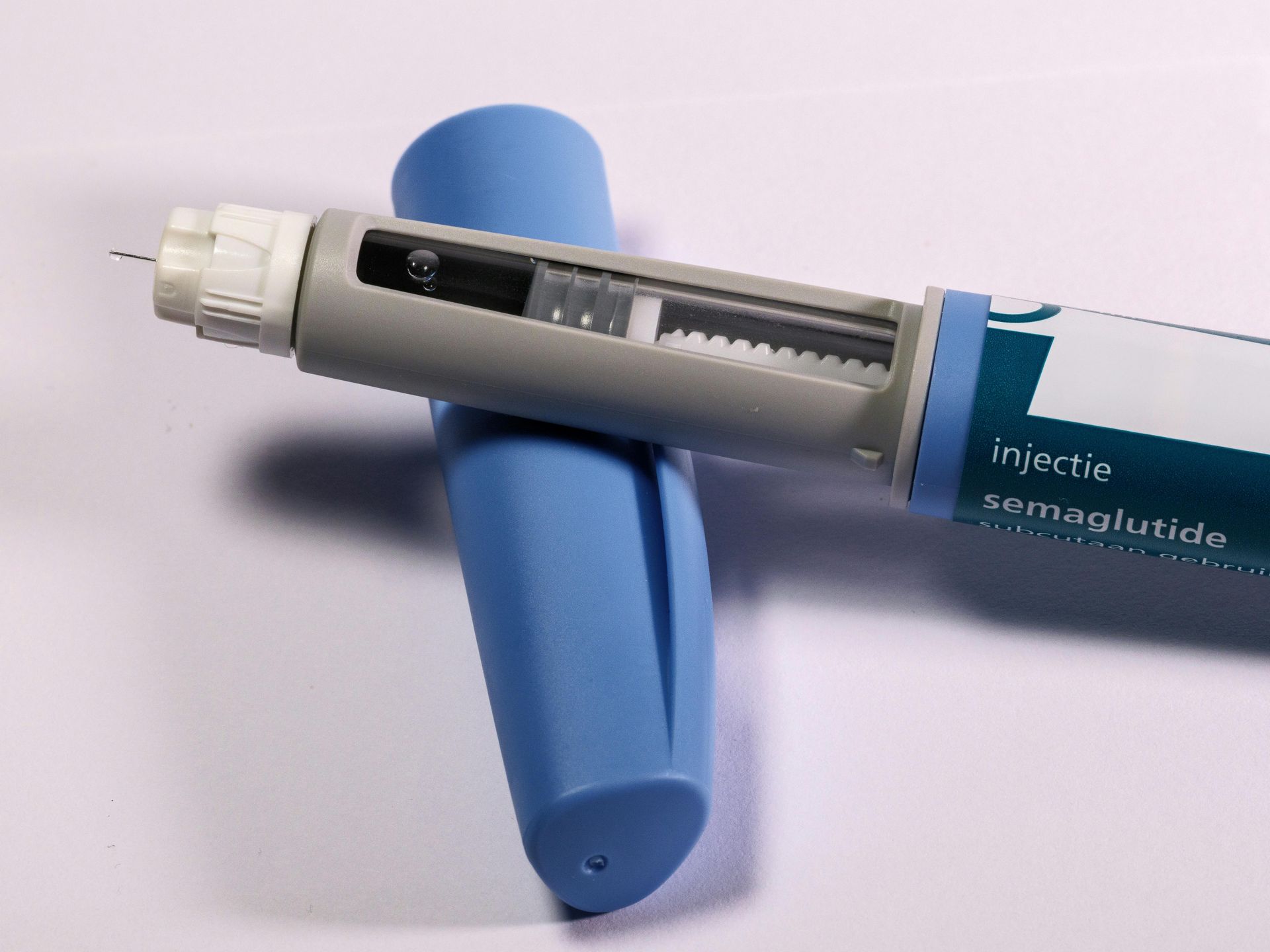IV infusion side effects are generally mild and manageable when administered by trained medical professionals, but understanding potential reactions helps you prepare for safe treatment. Intravenous therapy delivers fluids, vitamins, and medications directly into your bloodstream, bypassing the digestive system for maximum absorption. While millions of people safely receive IV therapy each year, being informed about possible side effects ensures you can recognize normal reactions versus complications that need attention.
Whether you're considering
IV infusion for hydration, recovery, or wellness support, knowing what to expect makes the experience more comfortable and helps you make confident healthcare decisions.
What Are the Most Common IV Infusion Side Effects?
Most people who receive IV therapy experience minimal discomfort, but some side effects occur frequently enough that medical professionals consider them normal responses to treatment. The injection site often develops mild bruising or soreness similar to having blood drawn. This tenderness typically resolves within 24 to 48 hours and responds well to ice application.
Patients commonly report a cool sensation traveling up the arm as fluids enter the bloodstream. This happens because intravenous solutions are stored at room temperature, which feels cooler than your body's natural temperature. Some individuals notice a metallic taste in their mouth during certain vitamin infusions, particularly those containing high doses of B vitamins or minerals.
Temporary fatigue occasionally occurs as your body processes the influx of nutrients and fluids. This reaction usually passes quickly, often within an hour of completing treatment. The dose and specific formulation of your IV therapy influence which side effects you might experience.
Localized Reactions at the Injection Site
The area where the nurse inserts the catheter deserves special attention because most minor complications develop at this location. Redness around the insertion point is normal immediately after treatment, but watch for spreading warmth or increasing discomfort. Swelling at the IV site typically indicates the catheter moved slightly, allowing fluid to leak into surrounding tissue rather than staying in the vein.
Itching near the injection site sometimes develops as part of your body's healing response. Gentle pressure with a cold compress usually provides relief without medication. Healthcare professionals monitor these symptoms closely during your session to address any concerns before they escalate.
Fluid overload occurs when your circulatory system receives more volume than your heart can effectively pump, particularly concerning for patients with heart conditions or kidney disease. Symptoms include sudden shortness of breath, rapid heart rate, elevated blood pressure, and swelling in the legs or abdomen. This complication underscores why thorough medical screening before treatment is essential.
Thrombophlebitis involves inflammation of the vein where the IV catheter was placed. The affected area becomes tender, warm, and sometimes hard to the touch. While uncomfortable, this condition typically resolves with warm compresses and anti-inflammatory medications under your doctor's guidance.
When to Seek Emergency Medical Care
Certain symptoms require immediate emergency room evaluation rather than waiting to contact your IV therapy provider. Chest pain or pressure, severe difficulty breathing, signs of stroke such as facial drooping or slurred speech, or loss of consciousness demand urgent medical attention. Anaphylaxis, though extremely rare, requires emergency treatment with epinephrine.
How Can I Minimize IV Infusion Side Effects?
Preparation significantly reduces your risk of complications and improves your overall treatment experience. Start by providing your nurse with a complete medical history, including all medications you take, known allergies, and previous reactions to IV therapy or vaccines. This information helps your medical team customize your treatment and anticipate potential issues.
Hydration status before your appointment matters more than most people realize. Drinking plenty of water in the hours leading up to your session makes your veins more visible and easier to access, reducing the number of needle sticks needed. Well-hydrated patients typically experience faster, more comfortable IV placement.
Communicate openly with your nurse throughout the treatment. Report any unusual sensations immediately, even if they seem minor. Healthcare professionals can adjust the infusion rate, reposition the catheter, or add comfort measures to address your concerns. Never feel embarrassed about speaking up during your session.
Choosing a Qualified Provider
The expertise of your IV therapy provider directly impacts your safety and comfort. Licensed registered nurses or other qualified medical professionals should always administer intravenous treatments. Ask about their experience specifically with IV therapy, not just general nursing credentials.
Reputable providers conduct thorough medical screenings before every treatment, checking vital signs and reviewing your current health status. They should explain exactly what's in your IV formulation, potential side effects specific to those ingredients, and aftercare instructions. Avoid providers who seem rushed or dismissive of your questions.
Sterile technique makes the difference between safe treatment and infection risk. Your nurse should wash hands thoroughly, use single-use gloves, and clean your skin with an antiseptic solution before catheter insertion. All supplies should come from sealed, sterile packages opened in your presence.
Who Is Most at Risk for IV Infusion Side Effects?
Individual factors influence how your body responds to intravenous therapy. Patients with compromised immune systems face higher infection risk, making extra-careful sterile technique essential. Autoimmune conditions, active cancer treatment, or immunosuppressive medications all fall into this category.
Cardiovascular health significantly affects how well your body tolerates fluid infusions. Anyone with congestive heart failure, poorly controlled blood pressure, or recent cardiac events needs medical clearance before receiving IV therapy. The additional fluid volume can strain an already-taxed circulatory system.
Kidney function determines how efficiently your body processes and eliminates the fluids and nutrients delivered through IV therapy. Chronic kidney disease or acute kidney injury may require adjusted treatment protocols or make certain IV formulations inappropriate. Blood tests measuring kidney function help providers make safe decisions.
Special Considerations During Pregnancy
What Happens If IV Fluid Leaks Into Surrounding Tissue?
Infiltration describes the condition where intravenous fluid escapes the vein and collects in surrounding tissue. This complication occurs when the catheter dislodges slightly or punctures through the back wall of the vein. You'll notice swelling around the IV site that feels cool to the touch, along with tightness and discomfort that increases as more fluid accumulates.
The affected area may appear pale or blanched compared to surrounding skin. Unlike normal post-treatment bruising, infiltration causes noticeable puffiness that develops during your treatment rather than afterward. Your nurse should stop the infusion immediately upon recognizing these symptoms and remove the catheter.
Treatment for infiltration involves elevation of the affected limb and cold compresses to reduce swelling. Most cases resolve completely within 24 to 48 hours without lasting damage. However, certain medications can cause tissue necrosis if they infiltrate, making prompt recognition crucial. Your provider should document the incident and monitor your recovery.
Extravasation: A More Serious Complication
Extravasation represents a severe form of infiltration where vesicant medications leak into tissue. While this complication rarely occurs with standard hydration or vitamin therapy, certain chemotherapy drugs or concentrated electrolyte solutions can damage tissue if they escape the vein. Symptoms include severe burning pain, rapid swelling, and skin changes at the injection site.
This medical emergency requires immediate intervention to minimize tissue damage. Treatment may involve specific antidotes, careful monitoring, and in severe cases, consultation with a plastic surgeon. Fortunately, basic wellness IV formulations used in
mobile IV therapy settings pose minimal extravasation risk.
Can Vitamins in IV Therapy Cause Side Effects?
High doses of certain vitamins delivered intravenously can produce distinct reactions different from oral supplementation. Vitamin C in doses exceeding 10,000 mg sometimes causes temporary digestive upset or mild diarrhea as your kidneys work to eliminate excess amounts. Some patients report a warm, flushed feeling throughout their body during high-dose vitamin C infusions.
B vitamins, particularly B12, frequently produce that characteristic metallic taste many IV therapy recipients experience. B-complex vitamins also turn urine bright yellow, which alarms some people but represents a normal, harmless effect. This color change occurs because your body excretes excess B vitamins through the urinary system.
Magnesium infusions often create a distinctive warm sensation that spreads through the body. Patients describe feeling relaxed or slightly drowsy, which many find pleasant. However, too-rapid magnesium administration can drop blood pressure temporarily, which is why experienced nurses carefully control the infusion rate.
Managing Vitamin-Related Reactions
Most vitamin-related side effects resolve by slowing the infusion rate. If you experience discomfort during your treatment, your nurse can reduce the flow rate or pause the infusion briefly. These simple adjustments typically eliminate symptoms while still delivering the full therapeutic dose over a slightly longer timeframe.
Drinking additional water after your IV session helps your kidneys process and eliminate excess vitamins more efficiently. This reduces the intensity of effects like bright yellow urine or temporary digestive changes. Adequate hydration also supports your body's ability to utilize the nutrients effectively.
How Long Do IV Infusion Side Effects Last?
The timeline for side effects varies considerably depending on which symptoms you experience and your individual physiology. Minor injection site soreness typically peaks within the first few hours after treatment and gradually improves over 24 to 48 hours. Bruising may become more visible the day after your IV therapy before fading over the following week.
Systemic effects from the vitamins and nutrients themselves usually resolve more quickly. That metallic taste or warm sensation typically disappears within minutes to hours after your infusion completes. Fatigue, when it occurs, generally lifts within a few hours as your body adjusts to the nutrient boost.
Chills occasionally develop during or shortly after IV therapy, particularly when receiving cold fluids quickly. Requesting warm blankets during your treatment prevents this reaction, and any chills that do occur usually stop within 30 minutes of finishing your session. Body temperature regulation returns to normal quickly once the infusion ends.
Persistent Symptoms That Need Evaluation
Most side effects should show improvement within 24 hours of your treatment. Symptoms that worsen after the first day or persist beyond 48 hours warrant medical evaluation. Progressive swelling, increasing pain, or fever developing days after your IV therapy suggests complications requiring treatment.
Changes in how you feel overall also deserve attention. While some people experience temporary fatigue after IV therapy, you should start feeling better within a day or two. Persistent weakness, ongoing nausea, or other concerning symptoms may indicate an underlying condition unrelated to the IV treatment that needs medical assessment.
What Questions Should I Ask Before Getting IV Therapy?
Informed consent means truly understanding what you're receiving and potential risks. Ask your provider to explain each component in your IV formulation and why it's included. Generic answers like "vitamins and fluids" aren't sufficient - you deserve to know specific ingredients and their purposes.
Inquire about the credentials and experience of the person who will administer your treatment. How many IV placements have they performed? What training have they completed specifically in IV therapy? Where do they obtain their medical supplies, and how are sterile conditions maintained?
Understand the provider's emergency protocols. What happens if you develop an allergic reaction during treatment? Do they carry emergency medications like epinephrine? How quickly can they access emergency medical services if needed? These questions help you gauge their preparedness for complications.
Understanding Your Specific Risk Factors
Every patient brings unique medical history that influences their IV therapy safety profile. Discuss your current medications with your provider, as some drugs interact with IV nutrients. Blood thinners, for example, may increase bruising at the injection site. Certain antibiotics or heart medications require special consideration when planning your IV formulation.
Previous reactions to vaccinations, injectable medications, or IV therapy give important clues about potential sensitivities. Even seemingly unrelated allergies, such as to latex or adhesive bandages, matter when planning your treatment. Share this information upfront rather than waiting for your nurse to discover it during setup.
Are There Different Side Effects for Specific IV Treatments?
Different IV formulations carry unique side effect profiles based on their specific ingredients.
Hangover relief treatments typically include anti-nausea medications like Zofran, which may cause headache or constipation in some patients. The high-dose B vitamins in these formulations often produce that distinctive metallic taste and bright yellow urine.
Myers Cocktail therapy combines magnesium, calcium, B vitamins, and vitamin C. The magnesium component creates that warm, relaxing sensation throughout your body, while calcium may cause brief warmth or flushing at the injection site. These reactions indicate proper absorption and typically feel pleasant rather than concerning.
Immunity-boosting formulations like the
Super Immunity drip contain high doses of vitamin C and zinc. Zinc can sometimes cause mild nausea if infused too quickly, which resolves when your nurse slows the rate. The vitamin C provides antioxidant benefits but may cause temporary warmth or flushing sensations.
Conclusion
IV infusion side effects remain largely predictable and manageable when you choose qualified providers who prioritize safety and patient education. Understanding normal reactions like mild soreness or temporary metallic taste helps you distinguish them from symptoms requiring medical attention. The vast majority of patients experience minimal discomfort and significant benefits from their intravenous therapy.
Your individual risk factors, including existing medical conditions, medications, and allergies, influence how your body responds to IV treatment. Thorough medical screening before each session, combined with proper sterile technique and careful monitoring during treatment, minimizes complications. Open communication with your healthcare team ensures any concerns receive prompt attention.
The growing popularity of mobile IV therapy reflects both its convenience and safety record when delivered by experienced medical professionals. Whether you're seeking treatment for dehydration, recovery support, or general wellness, being informed about potential side effects empowers you to make confident healthcare decisions. Remember that serious complications remain rare, but knowing warning signs ensures you can seek appropriate care if needed.
Trust your instincts during and after IV therapy. Your body's signals provide valuable information, and no question is too minor to ask your medical team. With proper precautions and qualified providers, IV infusion offers an effective treatment option with manageable side effects for most patients seeking rapid hydration and nutrient delivery.







